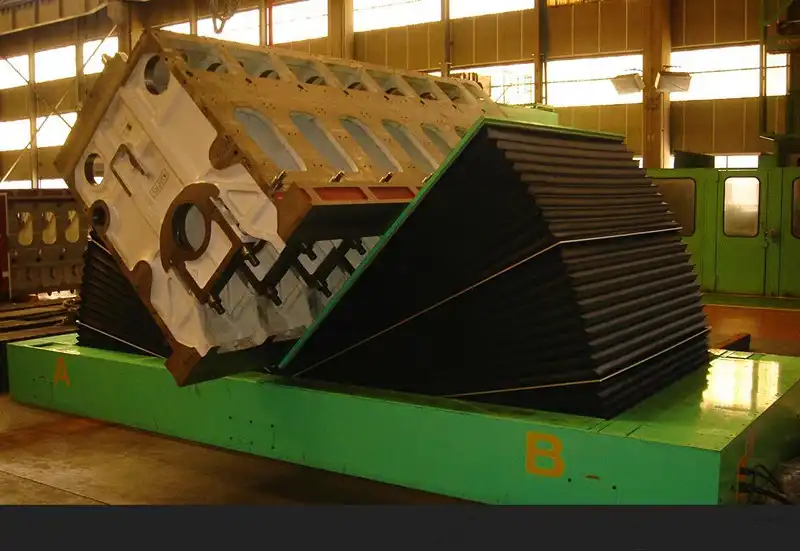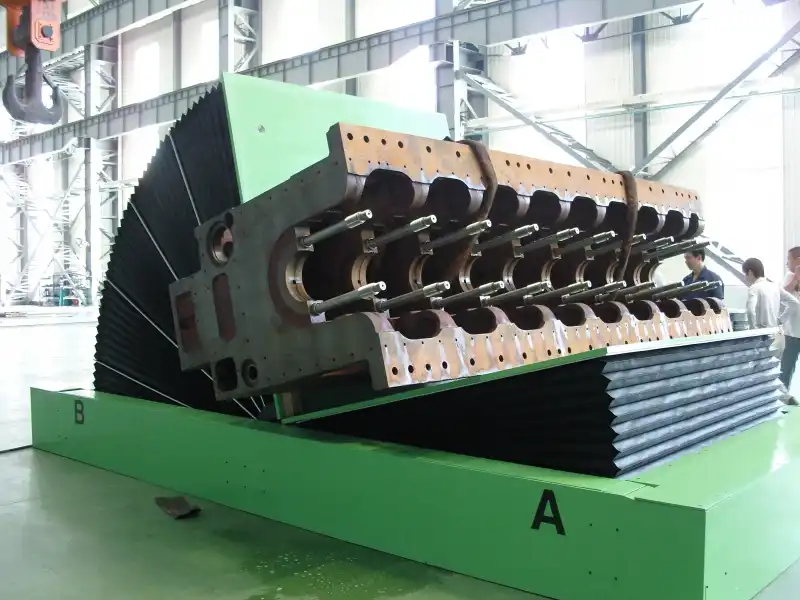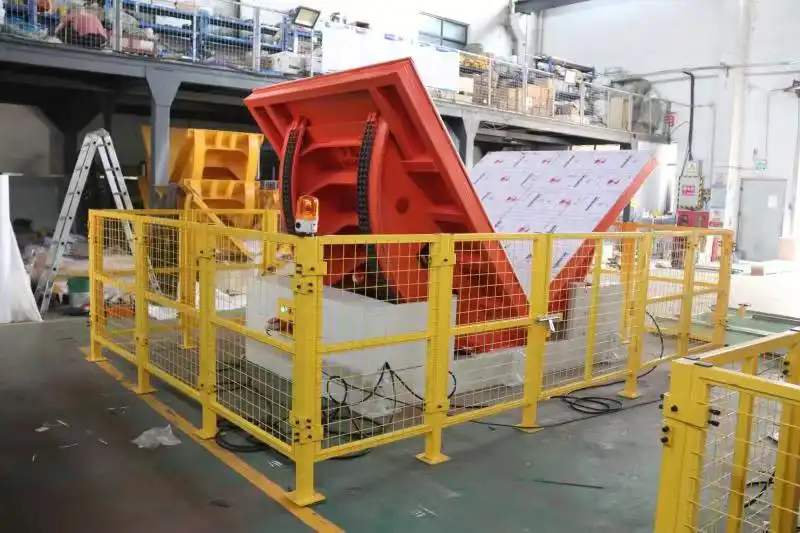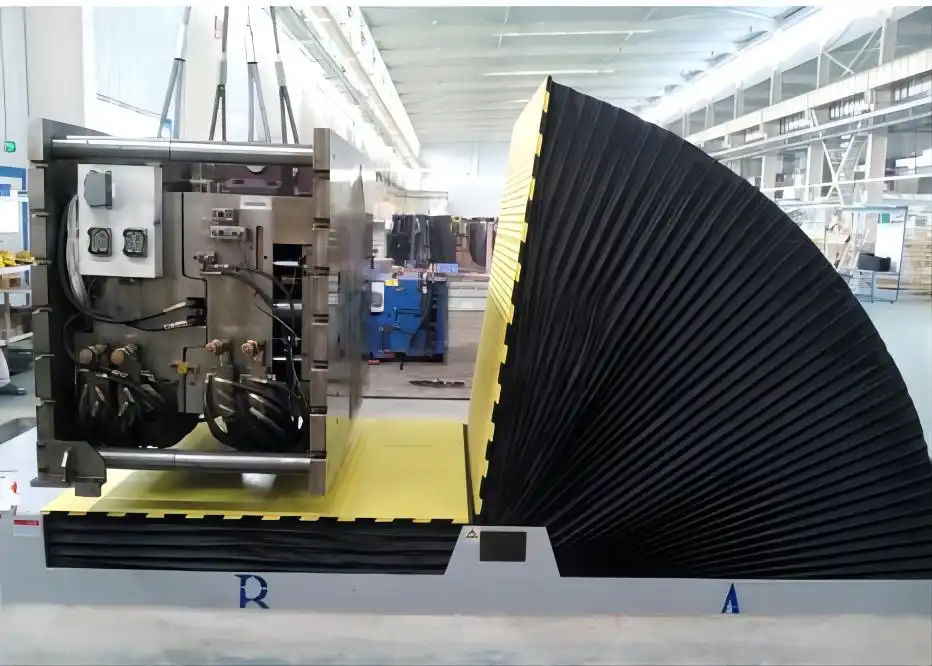Mold Flipper: How Do You Justify Capex to Vietnam Management Teams?
Getting capital expenditure approved for new equipment can feel like an uphill battle. You see a clear problem on the factory floor—maybe an unsafe process or a major bottleneck—and you have the solution. But when you bring it to management, you're met with questions about cost, return on investment, and necessity. They are focused on the bottom line, and if the current way of doing things, however inefficient, is still working, it's hard to justify a big new expense. This is especially true in a competitive market like Vietnam, where every dong of investment must be carefully scrutinized. The fear is that your proposal for a new mold flipper will be seen not as a vital improvement, but as a "nice-to-have" luxury that the company can't afford right now.
To justify the capital expenditure (capex) for a mold flipper to Vietnamese management teams, you must present a data-driven business case that focuses on three core pillars: enhanced workplace safety with a potential for reduced insurance costs, quantifiable ROI through labor savings and increased operational efficiency, and clear alignment with the company's long-term strategic goals for quality improvement and modernization. The key is to frame the purchase not as a cost, but as a direct solution to their most pressing operational and financial challenges.

I've been in the packaging and material handling industry for my entire career, first as an engineer and now as a factory owner myself. I've sat on both sides of the table. I’ve been the person making the proposal and the person signing the check. I understand the pressure to keep costs down and the need to show tangible results. That's why I want to share my insights with you. Proving the value of a machine like a mold flipper isn't about just listing its features. It's about telling a story with data, one that shows a clear path from this single investment to a safer, more efficient, and more profitable factory. Let’s break down how you can build that case.
On any heavy manufacturing floor, flipping large, heavy molds is one of the most dangerous tasks. Using overhead cranes and chains or trying to nudge it over with a forklift is a high-risk operation. You worry about a sling slipping, a chain snapping, or a sudden shift in weight. An accident could injure or even kill a worker, not to mention damage an expensive mold. This constant, low-level anxiety about safety is a hidden cost that drains morale and focus. The solution is to remove the human element of risk from the equation with a dedicated, engineered machine.
A mold flipper directly addresses safety by replacing hazardous manual and crane-assisted methods with a controlled, mechanized process. This systematic approach virtually eliminates the risk of crush injuries, sudden load drops, and damage to the mold itself. By demonstrating this significant reduction in operational risk, you can present a compelling case to your insurance provider for lower liability premiums, creating a direct and recurring financial return on the investment.

Deconstructing the Cost of "Free"
The traditional methods of flipping a mold may seem "free" because you're using existing equipment like a crane. But they are far from it. Every time a team gathers to perform this task, your company is taking a significant gamble. Let's break down the real, often hidden, costs associated with these outdated methods.
First, there's the immediate risk to your people. A crush injury from a falling or slipping mold is a catastrophic event. The direct costs are easy to see: medical bills, worker compensation, and potential legal action. But the indirect costs are just as damaging. An accident forces a production shutdown, leading to lost output. It requires investigations from both internal teams and potentially government safety agencies, consuming valuable management time. It also severely damages team morale. A workplace that feels unsafe is a workplace with lower productivity and higher employee turnover.
Second, consider the risk to your equipment. Molds are precision-engineered tools that can cost tens or even hundreds of thousands of dollars. An uncontrolled flip using a crane can easily cause damage. Dropping a mold can create micro-fractures, misalign the two halves, or dent critical surfaces. These damages lead to poor quality products, increased scrap rates, and costly, time-consuming repairs. In a worst-case scenario, the mold is damaged beyond repair, forcing a huge, unplanned capital expense. A mold flipper handles the mold smoothly and securely, rotating it on a stable platform and eliminating the shock and impact of crane-based methods.
Here is a simple risk comparison:
| Factor | Traditional Crane Method | Dedicated Mold Flipper |
|---|---|---|
| Control | Low; depends on operator skill and rigging | High; controlled, predictable mechanical motion |
| Risk of Injury | High; crush hazards, falling load | Extremely Low; operator is at a safe distance |
| Risk of Mold Damage | Moderate to High; impact, shock, dropping | Extremely Low; smooth, stable rotation |
| Process Consistency | Low; varies with each operator/crew | High; 100% repeatable process |
| Insurance View | A known high-risk activity | A demonstrated risk mitigation control |
When you present this to management, you're not just talking about feelings. You are presenting a risk analysis. By investing in a mold flipper, you are proactively buying down risk. This is a language that resonates with any business leader. Furthermore, in markets like Vietnam, there is a growing focus on meeting international safety standards like ISO 45001. Adopting safer technology is not just good business; it's a strategic move to become a world-class manufacturer and a more attractive partner for global customers. You can then take this documented safety improvement to your insurance company and argue for a reduction in your premiums.
What is the tangible ROI of a mold flipper in terms of labor costs and operational efficiency?
In your factory, time is money. Every process that is slow, inefficient, or requires too many people is quietly draining your profits. Flipping a mold is a perfect example of this. It's a necessary step for maintenance or production changes, but it doesn't add any direct value to the final product. It's pure overhead. The longer it takes and the more people it involves, the bigger this hidden cost becomes. It creates a bottleneck that holds up your entire production schedule. What if you could turn this slow, multi-person job into a fast, one-person task?
The tangible ROI of a mold flipper is calculated from a significant reduction in direct labor costs and a dramatic increase in operational speed. A mold flipper allows a single, semi-skilled operator to safely and quickly flip a heavy mold in minutes. This frees up highly skilled personnel like crane operators and riggers to perform value-added tasks. This efficiency gain translates directly into reduced downtime between production runs, more mold changes completed per shift, and a faster, more agile manufacturing cycle.

The Math of Efficiency
Vietnamese management teams are pragmatic and data-driven. They will want to see the numbers. A vague promise of "being more efficient" is not enough. You need to show them a clear calculation that leads to a specific payback period. Let's build a simple, conservative ROI model.
First, document the current process. Observe and time how long it takes to flip one mold using your current method. Be honest and thorough.
- Personnel Involved: 1 Crane Operator + 2 Riggers/Floor Staff = 3 People
- Time Required: Let's say it takes 30 minutes from start to finish. This includes finding the right chains, rigging the mold, the slow lift and turn, and unrigging.
- Total Labor Time per Flip: 3 people x 30 minutes = 90 man-minutes
Now, let's look at the process with a mold flipper.
- Personnel Involved: 1 Machine Operator (can be a floor worker, not a specialized crane operator) = 1 Person
- Time Required: The machine cycle is typically very fast. Let's be conservative and say the entire process takes 5 minutes.
- Total Labor Time per Flip: 1 person x 5 minutes = 5 man-minutes
The savings are immediately clear.
- Time Saved per Flip: 90 man-minutes - 5 man-minutes = 85 man-minutes
Now, let's turn this time saving into a financial number. You need to know the approximate number of mold flips per year and the average loaded labor cost.
| Variable | Example Value | Calculation |
|---|---|---|
| Molds Flipped per Day | 4 | |
| Operating Days per Year | 300 | |
| Total Flips per Year | 4 x 300 = 1,200 flips | |
| Man-Minutes Saved per Flip | 85 | |
| Total Man-Minutes Saved per Year | 1,200 x 85 = 102,000 minutes | |
| Total Man-Hours Saved per Year | 102,000 / 60 = 1,700 hours | |
| Average Loaded Labor Cost (per hour) | $5 USD (example) | |
| Annual Direct Labor Savings | 1,700 hours x $5/hr = $8,500 USD |
With a direct annual saving of $8,500, if the machine costs $25,000, the simple payback period from labor savings alone is just under three years. But this calculation doesn't even include the most significant benefit: freeing up the crane. In most factories, the overhead crane is a major bottleneck. While it's busy flipping a mold for 30 minutes, it's not moving raw materials, loading finished goods, or assisting with other critical machine setups. By reducing the crane's involvement in mold flipping to zero, you unlock that capacity. This increase in overall plant velocity can have a much larger financial impact than the direct labor savings, helping you achieve goals like 95% capacity utilization.
How does investing in a mold flipper align with long-term goals like digitalization and quality improvement?
It's easy for management to see a mold flipper as just a piece of heavy machinery—a simple, standalone solution to a simple, physical problem. They might not immediately see how this "dumb" machine fits into their ambitious, long-term vision for a smart, digital factory. They are focused on big-picture goals like Industry 4.0, data analytics, and improving overall product quality. If your proposal doesn't connect to these strategic objectives, it can seem like a step sideways instead of a step forward.
Investing in a mold flipper is a foundational step that aligns directly with long-term strategic goals for digitalization and quality. It promotes quality by protecting your most valuable tooling—the molds—from damage during handling, which leads to lower scrap rates and more consistent products. It enables digitalization by standardizing a critical manual process, making it repeatable and measurable. Modern flippers can be integrated with factory MES platforms, turning a physical action into a valuable data point for a fully connected, smart factory.

Protecting Quality at the Source
The quality of your final product can never be better than the quality of the mold that makes it. Molds are the heart of the production process. They are expensive, precision assets. Every time a mold is handled improperly with a crane, it's at risk. A small drop, a sudden jolt, or an impact can cause damage that is invisible to the naked eye. This damage, like micro-cracks or slight misalignments, translates directly into quality problems down the line: parts that are out of tolerance, surface blemishes, and higher scrap rates. These quality issues increase costs and can damage your company's reputation.
A mold flipper solves this problem. It is designed for one purpose: to handle molds safely and gently. The wide, stable platform supports the full weight of the mold, and the smooth, hydraulic or electro-mechanical rotation eliminates the shock and vibration common with crane handling. By investing in a mold flipper, you are investing in the preservation of your most critical tooling. This directly supports the strategic goal of improving quality and reducing the cost of poor quality (COPQ), which includes scrap, rework, and warranty claims. This is a powerful argument that connects the machine directly to the company's bottom line.
Building the Foundation for a Smart Factory
A forward-thinking manager is always thinking about digitalization. How can we get more data? How can we connect our processes? How can we achieve total production visibility? A mold flipper is a perfect, practical starting point on this journey.
Here’s how it fits into a digital strategy:
- Standardization: The first step of any digital transformation is to standardize manual processes. Automation removes human variability. With a mold flipper, the process of turning a mold becomes 100% consistent and repeatable. The time it takes is predictable. This creates a reliable building block in your overall production system.
- Data Integration: A modern mold flipper is more than just a motor and a frame. It can be equipped with sensors and controls that connect to your larger factory network. It can be integrated with your Manufacturing Execution System (MES). When the MES schedules a mold change, it can signal the flipper. Once the flip is complete, the machine can send a signal back. This simple handshake turns a physical task into a trackable, digital event.
- Predictive Maintenance: By tracking the number of cycles, motor current, and operating hours, you can feed this data into your maintenance platform. This enables predictive maintenance not only for the mold flipper itself but also for the molds it handles. You can track exactly how many times each mold has been used and maintained, creating a complete digital history for each asset.
When you present the mold flipper in this light, you are no longer selling a piece of equipment. You are providing a key component for their future factory. You are helping them solve today's safety problems while building the foundation for tomorrow's digital ambitions.
How do you build a convincing business case for a mold flipper that resonates with data-driven Vietnamese managers?
You have done your research. You understand the safety benefits, the ROI calculations, and the strategic alignment. But all this work is useless if you cannot present it in a clear, concise, and convincing way. Management teams, especially successful ones in a dynamic market like Vietnam, are incredibly busy. They do not have time to read a 50-page report. They need the key information presented in a way that allows for a quick but confident decision. A poorly structured proposal filled with vague claims will be dismissed before you even finish your presentation.
To build a convincing business case for a mold flipper that resonates with data-driven Vietnamese management, you must deliver a powerful one-page executive summary backed by detailed, transparent appendices. The summary must highlight the final numbers: the total investment, the calculated payback period in months, and the projected ROI. It should clearly link the investment to solving their specific challenges of safety, cost, and modernization. This format respects their time and speaks their language: the language of results.

The Anatomy of a Winning Proposal
Think of your proposal not as a document, but as a sales tool. You are selling a solution. The structure should be designed to guide the reader from the problem to your solution and end with a clear call to action (approval).
Part 1: The One-Page Executive Summary
This is the most important part of your entire proposal. A manager should be able to read this single page and understand 90% of your argument. It must be clear, visual, and focused on the bottom line.
- Project Title: Capital Investment Proposal: [SHJLPACK Model 90 Mold Flipper]
- Problem Statement (2-3 sentences): "Our current crane-based method for flipping molds poses a significant safety risk (document one near-miss if possible) and creates an efficiency bottleneck, consuming approximately 90 man-minutes per flip and tying up our main overhead crane."
- Proposed Solution (2-3 sentences): "We propose the acquisition of a dedicated mold flipper. This machine will reduce flip time by 94% to 5 man-minutes, eliminate manual handling risks, and free up crane capacity for value-added tasks."
- Key Financial Metrics (in a clear table):
- Total Investment (Machine + Install): $XX,XXX
- Annual Savings (Labor + Efficiency): $XX,XXX
- Payback Period: 22 Months
- 3-Year ROI: 65%
- Strategic Benefits (bullet points):
- Drastically improves worker safety and helps achieve ISO 45001 compliance.
- Protects valuable mold assets from damage, improving product quality.
- Creates a foundation for our Industry 4.0 and smart factory initiatives.
- Recommendation: "We recommend immediate approval for the purchase."
Part 2: The Detailed Appendices
This is where you show your work. The summary makes the claim; the appendices provide the proof. Keep it organized and easy to navigate.
- Appendix A: Safety Risk Assessment: A short document showing the current process (use photos if you can) and highlighting the specific hazards.
- Appendix B: Financial Analysis: The full spreadsheet showing your ROI and payback calculations. Be transparent about your assumptions (e.g., labor costs, number of flips).
- Appendix C: Supplier Information: Include the official quote from us at SHJLPACK, the technical specification sheet, and any relevant case studies or testimonials we provide. This adds third-party credibility.
- Appendix D: Implementation Timeline: A simple chart showing the timeline from purchase order to delivery, installation, and operator training. This demonstrates that you have thought through the entire process.
By presenting your case this way, you show respect for management's time and demonstrate your own business acumen. You are not just an engineer asking for a new tool; you are a business partner proposing a strategic investment with a clear, calculated return.
My Insights
I remember a day early in my career, back when I was an engineer on the factory floor. We had to flip a heavy die for a stamping press. We used two chain hoists and a lot of shouting. It was the way it had always been done. One afternoon, one of the chains slipped. The die, worth a small fortune, slammed onto the concrete floor. By pure luck, no one was standing underneath it, but the sound it made is something I'll never forget. We spent the next two weeks trying to repair it, and the entire production line was down.
That day, I learned a lesson they don't teach you in engineering school. The most obvious cost of something—the price tag on a new machine—is often the least important one. The real costs are hidden. They are the cost of risk, the cost of inefficiency, the cost of low morale, and the cost of lost opportunities. These are the costs that slowly and quietly drain a company's strength and potential.
When you propose a mold flipper to your management team, you are not just asking for money to buy steel and a motor. You are asking for an investment in certainty. The certainty that your team will go home safe every day. The certainty that a critical process will take five minutes, not thirty. The certainty that your multi-million dollar molds are protected. In a business world filled with uncertainty—volatile material prices, shifting market demands, unpredictable supply chains—buying certainty is one of the most powerful strategic moves a leader can make. Vietnamese management teams are sharp and pragmatic. They have built successful companies through smart, practical decisions. Show them, with clear data and a solid plan, how this is the most practical decision they can make. Show them you're not buying a machine; you are eliminating a hidden cost. If you do that, you will get your approval.
Conclusion
Justifying a mold flipper in Vietnam is about translating safety and efficiency into the clear language of ROI, risk reduction, and long-term strategic advantage. Present your case well.





